The Yarovaya gooseberry variety, unpretentious to care for, is ideal for the most delicious preparations
Gooseberry Yarovaya belongs to the most popular varieties among gardeners in Russia and the CIS countries. It yields a harvest with high flavor characteristics of berries and has simple agricultural techniques.
In this article you will find a detailed description of the variety, its advantages and disadvantages, technology and cultivation features depending on the region.
The content of the article
What is this gooseberry variety
A number of key advantages and relative simplicity have brought the variety to a number of promising ones.
Brief history of origin and distribution
Gooseberry Yarovaya was brought out by the scientist-sectioner A.G. Voluznev at the Belarusian Scientific Research Institute of Horticulture and Potato Growing.
The Columbus variety was used as a parent base. Its seeds were treated by free pollination and received a berry with new varietal qualities.
Characteristics and description of the bushes
Spring gooseberries are classified as medium in height - the bush reaches 1.5 m and consists of even erect shoots. The shape of the crown is slightly spreading. The branches are moderately covered with double or single, non-thick thorns. Dark green leaves are rounded with jagged edges.
An adult plant requires support or a garter to the trellis.
Resistant to temperatures
The variety is characterized by increased winter hardiness. It easily tolerates frosts down to -30… -35 ° C. Under more severe conditions, the root system suffers, the buds die off, which will affect the harvest of the next season.
Particular attention is paid to young bushes, for which at -4 ° C the probability of frost damage increases. Their pre-winter preparation necessarily includes warming the root zone with a thick layer of mulch.
When the bush freezes, the recovery period will take 4-5 years.
Moisture and drought resistance
The Yarovaya variety can withstand prolonged heat and drought. The greatest need for moisture falls on the period of flowering and the beginning of fruit ripening. Systematic irrigation at this time will increase yields by 20-25%.
Constant excessive watering or close occurrence of groundwater leads to the death of roots.
Disease and pest resistance
The variety is not susceptible to powdery mildew - one of the most common crop diseases. With an unfavorable phytosanitary situation on the site, it is affected by pests and pathogenic organisms.
Characteristics and description of fruits
Yield indicators are high - up to 6 kg per bush. Most are formed on shoots 3-6 years old. Under the right growing conditions, stable fruiting lasts at least 20 years.
Increased yield and berry masses promotes timely watering and good illumination. In the shaded area, the fruits become smaller and their number decreases.
In late June - early July, the fruiting period begins. The berries are lemon-yellow in color, with a thin skin and a sweet and sour taste. The shape is oblong, there are almost no edges, the average weight of the fruit is 3-4 g.

Important! Overripe gooseberries are baked in the sun and have a watery and empty taste.
Areas of their application
The Yarovaya variety belongs to the category of universal use. The berries are processed into jam, compotes and various desserts are made. The freshly harvested crop is stored in the refrigerator, sprinkled on containers in a thin layer.
If necessary, transport unripe gooseberries are harvested.
Advantages and disadvantages of the variety
The variety has a lot of advantages:
- early maturation;
- high yield rates;
- prolonged fruiting;
- drought and frost resistance;
- transportability, berries retain their presentation for a long time;
- resistance to powdery mildew.
During the cultivation process, some disadvantages were discovered:
- high probability of infection with fungal diseases;
- berries quickly overripe and the pulp acquires a mealy texture;
- sharp thorns interfere with harvesting and maintenance.
Growing technology
The rules for growing gooseberries come down to determining a suitable site, planting time and further care.
Optimal conditions
The choice of a planting site is one of the paramount conditions for trouble-free cultivation and the disclosure of varietal opportunities.
For gooseberries, sections along fences and fences are suitable, which will protect against wind blowing.
Other requirements:
- lack of shadow;
- the passage of groundwater at a level not higher than 1.5 m;
- neutral or slightly acidic drained soil.
Terms and rules of landing
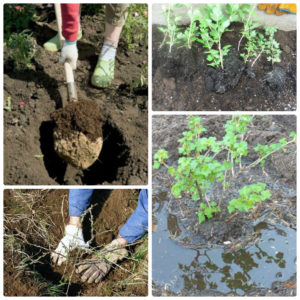
Autumn is most suitable for planting crops. 3-4 weeks before the onset of frost, a place is prepared. In this case, the adaptation of the plant to the local climate will be easier. In the spring they are planted in March-April in order to be in time before the start of sap flow.
When buying planting material, they are guided by the following quality criteria:
- the age of the seedling is 2 years;
- 2-3 main shoots from 20 cm long;
- main roots - from 25 cm;
- no deformation, damage.
The planting pits are arranged in such an order that there is a distance of at least 1-1.5 m between neighboring bushes, and the row spacing is 2 m. The hole is made 2 times larger than the volume of the roots.
Important! Thickening of the bushes will lead to lower yields, insufficient air circulation, and an increased risk of disease and pest spread.
Planting stages:
- The soil from the hole is mixed with compost or rotted manure, add 2 tbsp. l. potassium sulfate and superphosphate.
- Dried roots are cut off.
- The branches are shortened by 1/3 of the length, but so that at least 5 buds remain. This will ensure active growth and tillering.
- The seedling is placed in the middle of the hole so that the root collar is 5-8 cm below ground level.
- They fall asleep with earth, tamp and mulch with any organic matter.
Further care
Creation of favorable conditions for growth immediately after planting will ensure quick survival and adaptation of the bush. In autumn, seedlings are watered with warm water once, if the weather is dry. During pre-winter preparation, they are insulated with sawdust, leaves or spruce branches.
In the spring, when the buds awaken and the entire growing season, watered as the soil dries up. In the phase of formation, the ovary is moistened 1-2 times a week - 10 liters of water per adult bush. After picking the berries, watering is continued, since at this time the buds are laid for the next season. The surface layer of the earth is shallowly loosened so that a crust does not form.
Important! Water is poured only at the root on the trunk circle. Sunburns often form on wet leaves, and fungal spores are activated in cloudy weather.
Top dressing
Gooseberries do not require constant feeding, just a few times a year.
Sequence:
- In the spring, 30 g of nitrate is spilled with a solution.
- In the summer, they are fed once during the ovary of berries with a mixture of 70 g of superphosphate and 30 g of potassium sulfate.
- The second time after harvesting, fertilize with a complex mineral composition according to the instructions.
Pruning
Pruning is done in April, before the buds awaken, and in autumn, before the first frost. In the first 3 years, the perennial branches of the gooseberry are cut in half.This procedure sets the foundation for a healthy bush crown. Dry and diseased shoots are cut off at the very base.
For 4 years, the bush is thinned out to prevent thickening. According to the standard, the crown should consist of 15-20 branches, where there are 2-3 pieces for each age.
Important! Correct and timely pruning has a positive effect on yields and reduces the risk of disease.
Possible problems, diseases, pests
Growing problems are caused by diseases that cannot be ignored: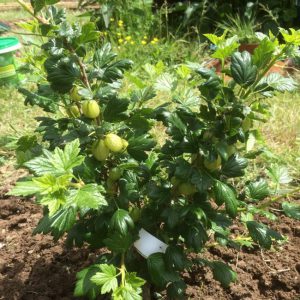
- Septoria - small brown spots turn into white ones. The leaves fall off, the quantity and quality of the berries decreases.
- Anthracnose - spreads in humid climates. It settles on the underside of foliage in the form of dark red spots. It quickly affects the entire green mass of the bush, then goes on to the shoots.
- Spheroteka (American powdery mildew) is a white bloom on berries that gradually thickens. The crop becomes unusable.
The Yarovaya variety is practically not exposed to viral infections. For treating bushes process before flowering and after fruiting with fungicides. Among gardeners, "Arcerid", "Topaz", "Tiovit-Jet" are trusted. For prevention and in the early stages of the disease, biological products "Fitoverm", "Trichodermin", "Fitosporin-M" help.
Pests causing the most damage:
- Spider mite - settles on the underside of the leaf, entangles with cobwebs and feeds on plant sap. Hot weather contributes to the spread.
- Yellow sawfly - hibernates under a bush, flies to a bush in spring, lays larvae and eats greens.
- Moth is a butterfly that lays eggs in gooseberry flowers. Unripe berries turn red, indicating the presence of a caterpillar inside.
- Glassy - hibernates in the bark of shoots. It eats the buds, then feeds on the core of the branches, which leads to their drying out and breakage.
The danger of pests consists not only in the destruction of the bush, but also in the spread of pathogens. Autumn insecticide treatment, including the trunk circle, will save them from them. Suitable for gooseberry "Aktara", "Aktellik", "Iskra-M", "Karbofos". If the parasites appeared during the growing season, then they are sprayed only after picking the berries.
Wintering
Before the frost begins, fallen leaves are collected and weeds are removed. The soil near the trunk is loosened with a couple of handfuls of ash and mulched with compost or sawdust. If frosts below -35 ° C are not predicted for the coming winter, then insulation is not required.
Reproduction
Gooseberry multiply seeds and vegetatively. The first method is used to breed new varieties. Ordinary gardeners propagate using shoots and dividing the bush.
Layers
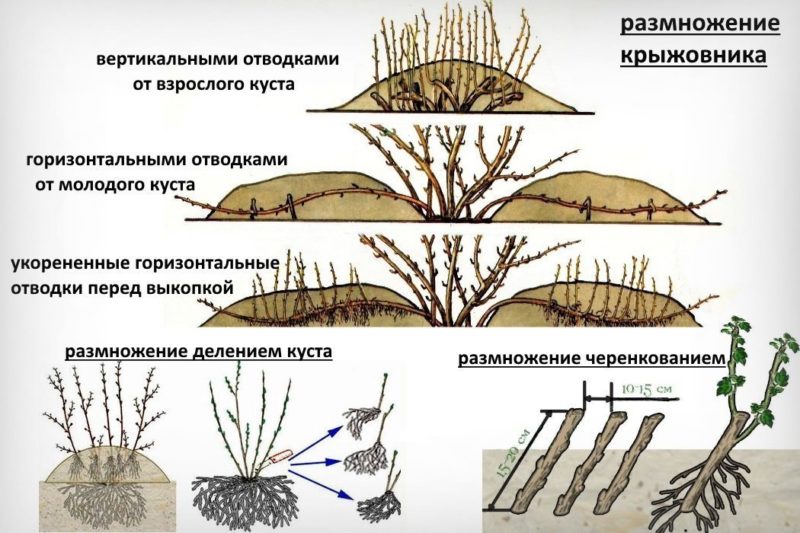
Horizontal - in early spring, one of the strongest shoots is bent down to the warm ground and fixed. Do not sprinkle with earth. By the beginning of summer, sprouts will appear, they are spud with nutritious soil. In autumn, part of the branch is cut off from the bush, the seedlings are divided according to the number of rhizomes and planted in a permanent place.
Vertical - in the fall, the shoot is shortened by 1/3 of the length. In the spring, new branches will go from the base. When they reach 15 cm in length, they are covered with a fertile substrate. In October, the shoots are cut along with the resulting roots and transplanted.
Cuttings
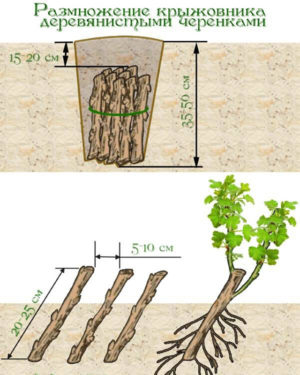
For this method, young branches are used. They are cut and divided into parts 8-10 cm long, so that each has 2 internodes. Rooted in a box with nutrient soil. Water and periodically spray until roots and new shoots appear. In the fall, the cuttings are ready for planting.
Dividing the bush
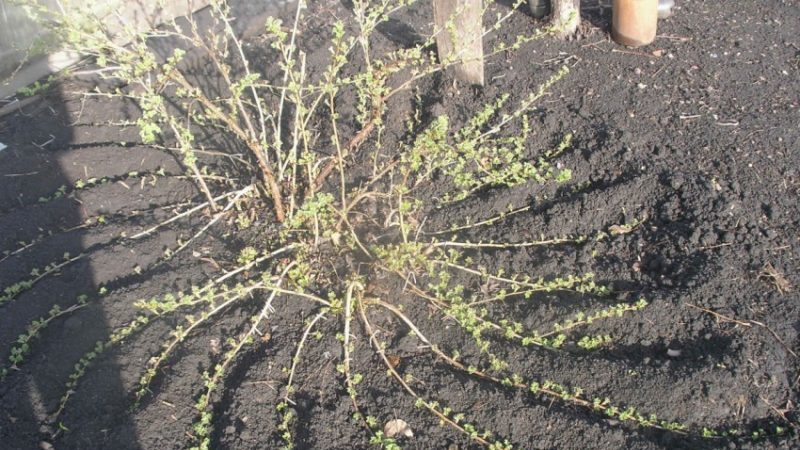
The bush is divided before the start of sap flow or after the end of the growing season. The dug out gooseberries are cut into pieces with a sharp pruner or knife, so that each has a root and 2-3 new shoots. They are planted in the traditional way.
Features of growing this variety, depending on the region
Spring gooseberries are ideal for growing in the European part of Russia, the North-West region, the Volga region and in the south of the country.The temperate climate provides optimal conditions for the growth of crops.
In Altai, the Far East and Siberia, the variety requires shelter for the winter. In the southern regions, gooseberries need more frequent watering.
Pollinating varieties
The Yarovaya variety is self-fertile and does not need a neighborhood with pollinators. But in practice, it has been noticed that when pollen from other gooseberry species is ingested, the yield increases.
Reviews of summer residents
Most of the owners of the variety are satisfied with the purchased variety, from the merits they note the taste and resistance to diseases.
Svetlana, Minsk: “I decided to find a sweet gooseberry variety. The seller advised Yarovaya, I believed and for good reason. Already in the first spring I was pleased with a large number of berries. At the end of June, she harvested the first harvest of sweet yellow berries. "
Dmitry, Nikolaev: “The variety suits me in taste and yield, the berries are beautiful. Ripens a week earlier than other species. For 10 years powdery mildew never noticed. "
Leonid, Rostov-on-Don: “The variety justifies its early title. The taste is good, there is little acid, the berries are medium and large in size. The branches are covered with them, so I had to make a support. We make a lot of jam every season. I haven’t had to fight pests or diseases yet ”.
Conclusion
The Yarovaya variety takes root in all horticultural areas. Its popularity is due to its early ripening period, delicious berries and winter hardiness. Agrotechnology is reduced to periodic watering, feeding, pruning, pest and disease prevention.